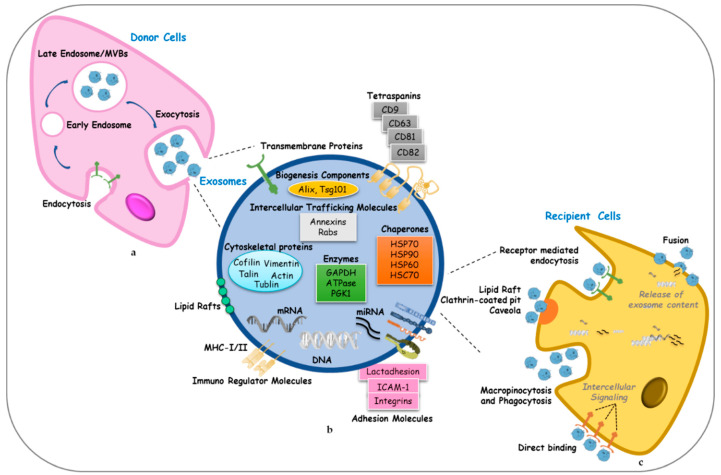Figure 1.
Biogenesis, structure and uptake of exosomes. (a) Exosome biogenesis starts with membrane endocytosis resulting in the formation of early endosomes that subsequently mature into late endosomes or Multi Vesicular Bodies (MVBs). MVBs can be transported to the plasma membrane through the cytoskeletal network and exocytosis occurs, allowing the release of exosomes into the extracellular space. (b) Exosomes contain different families of proteins categorized according to their functions, lipids, metabolites and nucleic acids (DNA, RNA, miRNA and other non-coding RNAs). (c) The entry of exosomes in recipient cells can be mediated by several mechanisms: direct fusion of exosomes with the plasma membrane allowing the deposit of their content into the cytoplasm; receptor-mediated endocytosis, lipid rafts, clathrin-coated pit and caveolae, macropinicytosis, phagocytosis, that allow the entry of intact exosomes in the cells; direct binding of exosomes to specific receptors that induce intracellular signalings into recipient cells. HSC: heat shock cognate; HSP: heat shock protein; ICAM-1: intercellular adhesion molecule 1; MHC: major histocompatibility complex; PGK1: phosphoglycerate kinase 1; Rab: Ras-related proteins in brain; Tsg101: Tumor susceptibility gene 101.

